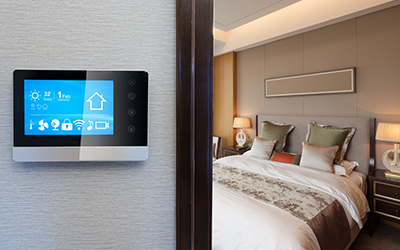
Source: d3sign/Stock Photos | Smart Phone/Getty images.
When it comes to tech usage, our research shows Generation Z and millennials are in relative lockstep with each other compared with older generational cohorts. However, there are a growing number of areas where these two groups are diverging. Conventional wisdom suggests that Gen Z will likely continue to follow the same path as millennials in terms of tech usage and the adoption of digital experiences. While this still holds true today, more instances are emerging where Gen Z is hesitating a bit instead of moving further down the digital-native path that has been a defining characteristic of millennials.
This blog posts presents the findings of a study conducted by S&P Global Market Intelligence 451 Research, which asked US consumers about their technology adoption habits and attitudes toward embracing digital experiences.
Slow adoption of new tech is the norm
Like 2024’s Q1 survey, a large number of respondents (42%) fall into the “tech laggard” category, meaning they tend to wait until new products have been well received before purchasing. More than one-third (37%) of respondents say they prefer to hear about the experiences of others before trying new products, and 33% prefer to stay with brands they already know. Only 15% are “tech leaders” who say they usually try new products before others.
Millennials are more likely to be “tech leaders” than Gen Z
While Gen Z and millennials remain most likely to be “tech leaders” who like trying new products first and are willing to pay more for them, millennials have set the high-water mark at 31% and 26%, respectively, a place Gen Z (at 26% and 24%, respectively) has yet to reach. Many have assumed Gen Z would be even more apt to try new tech, but instead they have become the most likely to wait to hear about the experiences of others before trying new products and prefer sticking with brands they are familiar with. This rings true in other surveys where we see Gen Z’s deeper entrenchment into the Apple ecosystem compared with other cohorts.
New tech is a luxury many cannot afford
Higher-income households (>$100,000 per year) remain more than twice as likely to try new products before others (23%) or pay more for new innovations (27%) compared with lower-income ones (<$50,000 per year; 12% and 10%, respectively). This demonstrates that the ability to adopt new tech depends heavily on financial resources and is seen as an unaffordable luxury for many households. The current economic environment has not helped this disparity and instead threatens to make it worse.
Interestingly, lower-income households are much more likely to say they stick to brands they are already familiar with compared with higher-income ones (37% versus 28%).
There’s probably a sense of comfort in buying familiar brands, especially for lower-income households who don’t want to risk wasting money on a new brand that may or may not live up to expectations.
Gen Z still most likely to seek out digital experiences
Despite being slower at adopting new technology than millennials, Gen Z remains highly engaged when it comes to digital experiences, with 58% saying mobile apps are essential to their daily lifestyles. While millennials (53%) lag a bit in comparison, the real drop-off starts with Generation X (39%) and falls even more precipitously for baby boomers (17%) and the Silent/Greatest Generation (7%). This is hardly surprising as Gen Z is the first true digital-native generation and their desire to be a bit more cautious when adopting new technology doesn’t negate the digital immersion they grew up in.
Income remains biggest factor in the brand versus price debate
The relative importance of brand versus price versus convenience is surprisingly consistent across four out of the five generational groups, with only the Silent/Greatest Generation showing a couple of noticeable differences. As such, household income is a much greater determinant.
More than half (52%) of lower-income households say they favor the lowest price regardless of brand, while just 27% of higher-income ones say the same. Likewise, higher-income households (54%) are twice as likely to say they’re willing to pay extra for the brand they prefer compared with lower-income ones (27%).
Brand loyalty is becoming more of a luxury for households that they must fit into ever-tightening budgets.
Smartphones are the primary devices for general-purpose computing
The survey also asked respondents about the primary devices they use for 11 common tasks, including email, banking, streaming and gaming. Overall, smartphones were the top choice for 10 of these tasks, with PCs being the top choice for online shopping. In particular, Gen Z and millennials were most likely to use smartphones to complete all 11 tasks while Baby boomers and the Silent/Greatest Generation were least likely. Gen X continues to stand out as the inflection point when it comes to using their smartphones for all of these tasks. Interestingly, Gen X is also the inflection point when it comes to refraining from some of these tasks altogether, which tends to be the case for the older cohorts.
Want insights on consumer technology trends delivered to your inbox? Join the 451 Alliance.

